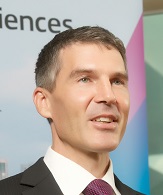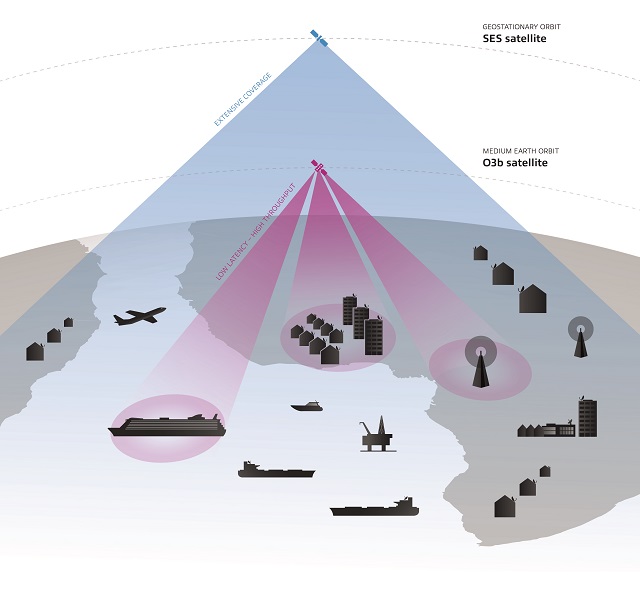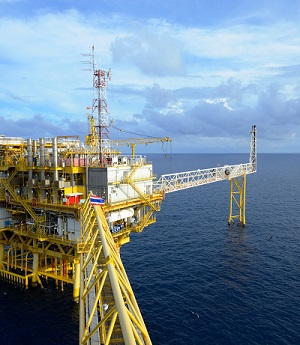The Week in Review: Cruise Ship Connectivity
The keel for Royal Caribbean International’s fourth Oasis class ship was officially laid last week at the STX shipyard in St. Nazaire, France.
The other Oasis class vessels, along with Quantum of the Seas and Anthem of the Seas, each have more bandwidth than the rest of the cruise industry combined.
Royal Caribbean International describes the “unprecedented bandwidth” as providing guests with “blazing-fast connectivity.”
 The global maritime broadband satellite communication market is expected to reach 50,000 units in service globally by 2024, with almost half of them in merchant shipping, making it one of the fastest-growing segments of the global satellite services industry.
The global maritime broadband satellite communication market is expected to reach 50,000 units in service globally by 2024, with almost half of them in merchant shipping, making it one of the fastest-growing segments of the global satellite services industry.
MarEx spoke to Glen Tindall, Vice President of Sales at satellite operator SES, an investor in the O3b technology used by Royal Caribbean International.
How is this extra-ordinary bandwidth achieved for ships such as Quantum of the Seas?
The connectivity is possible through O3b Networks’ provision of one gigabit per second of low latency capacity via a satellite beam that is constantly tracking the ship.
O3b Networks’ medium earth orbit high-throughput spot beam, in which SES has a significant investment, follows Quantum of the Seas on its journey. Each O3b satellite is flying at a distance of 8,000 kilometers from the Earth and has eight such beams which can be independently steered in real-time to follow a ship or a group of ships, providing low-latency, fiber-like connectivity on the high seas.

What advantages do medium earth orbit satellites have over satellites used for other communications at sea?
The use of O3b satellites, which are closer to the earth than traditional geostationary satellites, which orbit at around 36,000km, reduces latency, increases internet speed and improves voice and video quality for the user. O3b’s next generation IP trunking solution boosts existing link capacities to rival the affordability and latency of fiber.
The O3b system is uniquely designed for broad coverage. Because O3b is a constellation of satellites, when Royal Caribbean moves one of its top-of-the-line Oasis- or Quantum-class ships to another region around the world, the global O3b satellite constellation can provide its signature fiber-like throughput and low latency in the new location as well.
The demand for 24/7 connectivity is set to increase, and cruise companies like Royal Caribbean International can offer premium connectivity services as part of their revenue stream, but what other potential is there?
On the level of operational efficiency, services that were once housed on board could be located in centralized onshore data centers, freeing up precious space on board, and relocating certain crew skillsets back onshore.
High speed connectivity would not only benefit passengers, but crew welfare as well. The crew can stay in touch with family and friends through email, Skype and social media without the frustration of the slower speeds that they have had to put up with in the past.
Over time, as passengers and crew begin to expect high-bandwidth services such as gaming, video streaming, Voice over IP (VOIP) and even video conferencing, we expect more shipowners and operators to start offering satellite-enabled broadband connectivity on-board. Eventually, the day will come when high throughput satellites become a standard requirement for cruise operators just as Wi-Fi connectivity is for hotels around the world today.
Satellites with higher throughput and lower cost per bit will open up a multitude of new operational and communications possibilities for the shipping and offshore marine industry. Where will this lead?
We foresee cargo and merchant shipping using big data analytics enabled by high throughput satellite connectivity to enhance their operational efficiency. Real-time vessel monitoring from data collecting sensors will inform shipowners of the vessel’s fuel efficiency and equipment wear and tear, thereby reducing the down-time required for costly regular dry dock maintenance and repairs.
Rather than relying on a large team of maintenance crew to check each piece of equipment, a more streamlined team will be able to monitor their fleet remotely while on shore. Remote video surveillance systems can also enhance the security of crew and cargo in the event of piracy attacks. Moreover, access to bandwidth-hungry applications will allow crew members to stay connected with their loved ones – promoting crew welfare and staff retention rates.
Will new applications emerge?
High throughput satellite technology means that staff training can now be conducted remotely while at sea. Rather than having to conduct this training on shore, training courses can be conducted via live-feed video links, and trainees can also access interactive, media-rich training materials.
Shipowners will be able to satisfy increasingly stringent occupational health, safety and environment obligations more efficiently with high throughput satellite connectivity.
Moreover, the ability to connect crew with staff onshore via high speed links allows organizations to locate expensive skilled staff onshore so they can support multiple vessels rather than a single one.
 The offshore oil and gas industry is moving into increasingly deep and remote waters. What could high-speed satellite connectivity mean to them?
The offshore oil and gas industry is moving into increasingly deep and remote waters. What could high-speed satellite connectivity mean to them?
Companies can monitor their equipment through live video feeds, and sensors can detect any anomalies instantaneously. Instead of flying experts to remote rigs to try and figure out the problem and fix it, a process that can take days or weeks, companies will be able to ascertain the problem in a matter of hours through real-time data analytics and surveillance systems.
In the near future, we may even see the emergence of autonomous smart ships controlled and operated remotely. Proponents say that removing the human factor will lead to a safer navigational environment on the high seas. These unmanned vessels can also be used for high-risk operations in treacherous environments like the Arctic or deep oceanic trenches. High throughput satellites can facilitate the large amount of data transmission required for real-time video feeds and environmental data, especially in remote corners of the globe.
What does the future hold for SES?
In order to meet the needs of an evolving communications landscape, SES will be launching a series of hybrid satellites that consist of high throughput payloads as well as traditional wide beams. These satellites, SES-12, SES-14 and SES-15, will enable us to operate at higher efficiency as we will be able to cover high-traffic maritime hotspots such as the Straits of Malacca, while still serving traditional broadcast markets with wide beams.
With our high throughput satellite capacity offered in Ku-band, the new platforms and services that we will offer can be built on the customer’s existing hardware, making it cost efficient for customers who wish to access high speed connectivity.
The opinions expressed herein are the author's and not necessarily those of The Maritime Executive.
